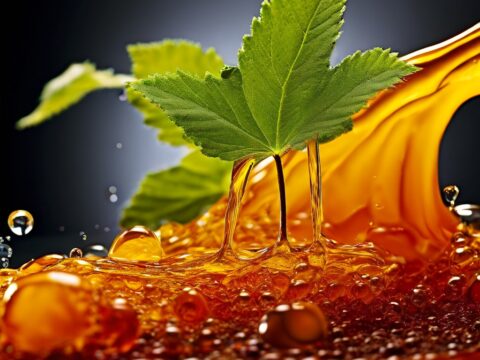Bitumen
October 9, 2021shale oil
October 12, 2021The first question after seeing the name of “bitumen emulsion” may come into your mind is that what is the difference between bitumen and bitumen emulsion?
The answer is that Bitumen emulsion is a liquid form of bitumen with less amount of viscosity.
The process of conversion of bitumen to the bitumen emulsion is so easy. Adding water and emulsifier to the bitumen makes a bitumen emulsion. You surely know that water and oil are two different phases and they cannot be mixed, so there needs a third component to make it possible and that is the emulsifier. (emulsifier is a substance that is added to the mixture to prevent the two liquids from separating. In addition to their ability to reduce the tension between oil and water molecules, emulsifiers have an electronic charge that affects the molecules of bitumen emulsion and lead to the categorization of it into Cationic and Anionic.)
The number of ingredients in the mixture should be as below:
Bitumen (55% to 65%)
Water (35% to 45%)
Emulsifier (should be a maximum of 0.5% of bitumen emulsion’s weight)
Different types of bitumen emulsion
There are two main types of bitumen emulsion; particles’ electrostatic charge, and breaking or setting time
articles’ electrostatic charge:
In this type, the particles with a negative charge are anionic, and particles with a positive charge are called cationic.
setting time:
In this type, the speed of water evaporation matters. Evaporation depends on the temperature of the water, the heater water, the sooner evaporation takes place. Based on the time consuming for water to evaporate, there are three subtypes; rapid setting emulsion (chip seals and surface dressing.), medium setting emulsion (open-graded mixes), and slow setting emulsion (slurry seals, and recycling asphalt).
repairing and maintaining roads, waterproofing, spraying, etc. are the most famous usages of the bitumen emulsion.
The last subtype of setting time, the slow-setting emulsion is the most stable type.
Some technical signs showing the characteristics of the emulsions
Numbers (1,2): 1 shows lower viscosity, 2 shows higher viscosity
“H”: shows a harder base bitumen (penetration grade 30/40)
“S”: shows softer base bitumen (penetration grade 80/100 )
Disadvantages of Bitumen Emulsion
Disadvantages of Bitumen Emulsion largely depend on its solvents. There are two types of solvents; soaps or water and gasoline solvent. In the first case, if the water evaporates, the bitumen sticks to the ground and there will be no disadvantage but bear in mind that this type is more expensive.
The latter type is based on gasoline solvent, if it evaporates, dangerous components such as sulfur remain in the environment and it causes serious diseases like cancers.
Bitumen emulsion standard
There are different institutions all over the world controlling the standards and qualifications of the bitumen.
Some of the most popular of them are in the USA; The American Association of State Highway and Transportation Officials (AASHTO), and The American Society for Testing and Materials (ASTM)

